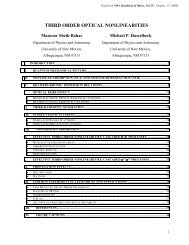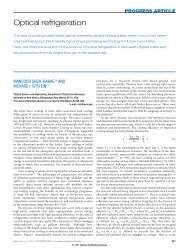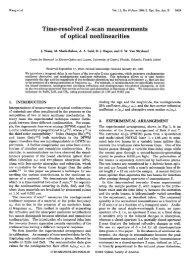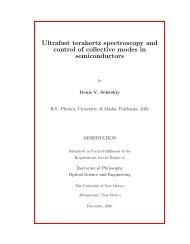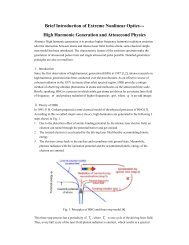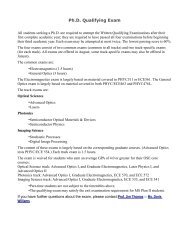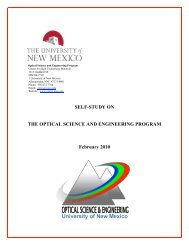Absorption spectra of wide-gap semiconductors in their ...
Absorption spectra of wide-gap semiconductors in their ...
Absorption spectra of wide-gap semiconductors in their ...
Create successful ePaper yourself
Turn your PDF publications into a flip-book with our unique Google optimized e-Paper software.
B. Imangholi et al. / Optics Communications 227 (2003) 337–341 339<br />
the pump irradiance. Changes <strong>in</strong> the probe beam<br />
divergence are monitored by a detector placed<br />
beh<strong>in</strong>d a partially obscur<strong>in</strong>g aperture <strong>in</strong> the farfield.<br />
The size <strong>of</strong> the aperture is set for 10%<br />
transmission <strong>of</strong> the He–Ne probe beam.<br />
The two-color technique gives enhanced sensitivity<br />
compared to a s<strong>in</strong>gle beam Z-scan where<br />
there can be distortion and measurement noise<br />
associated with surface imperfections. This occurs<br />
because a s<strong>in</strong>gle laser beam encounters nonuniformities<br />
as its spatial pr<strong>of</strong>ile changes dur<strong>in</strong>g<br />
sample translation. Background subtraction can<br />
reduce this, but a non-ideal surface still limits the<br />
measurement accuracy. An excite-probe arrangement<br />
with lock-<strong>in</strong> detection can provide a greatly<br />
enhanced signal-to-noise ratio [5]. We are able to<br />
measure transmittance changes <strong>of</strong>


